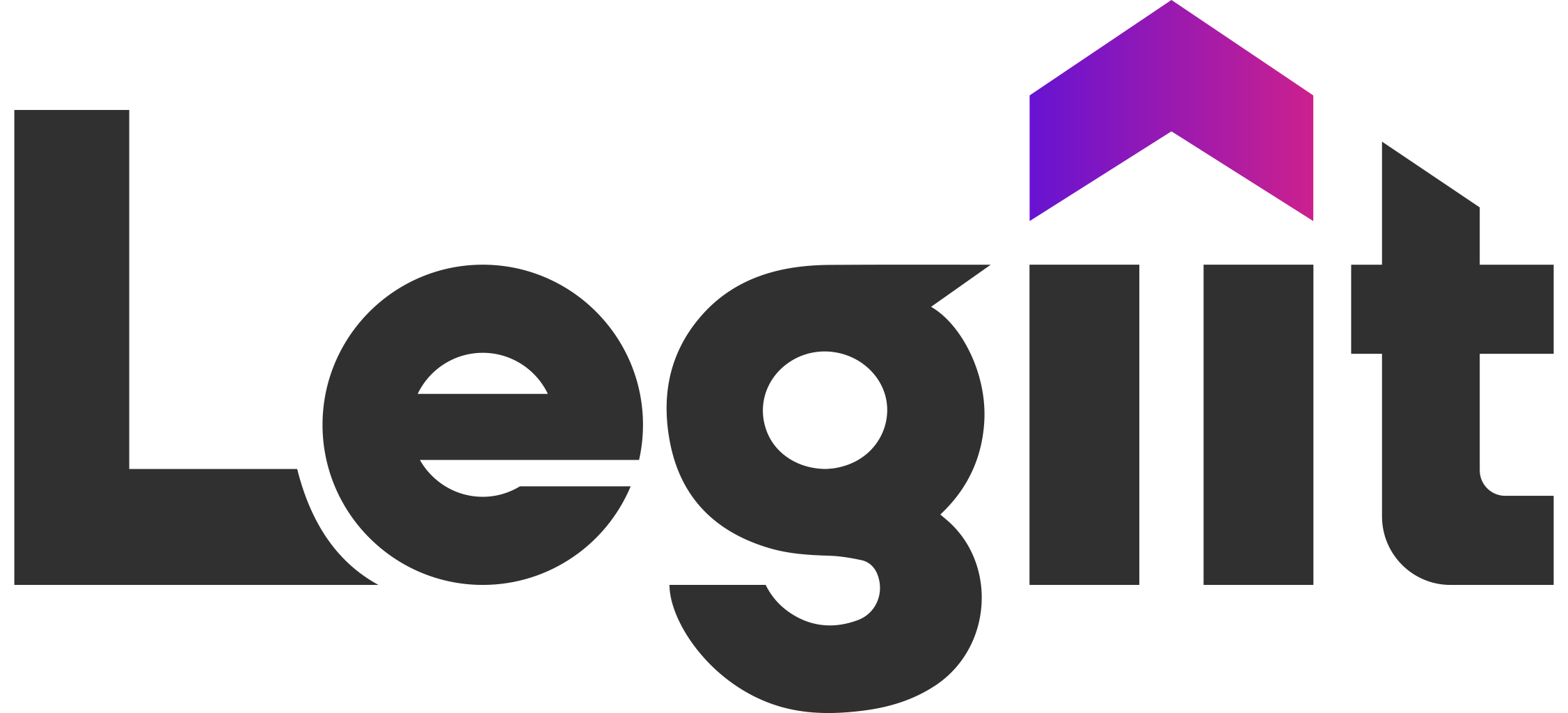SEO over-optimization can harm your site’s rankings by triggering penalties due to keyword stuffing and other aggressive tactics. Legiit helps you understand how to avoid site over-optimization by balancing keywords and maintaining natural content flow.
What is SEO Over-Optimization?
SEO over-optimization happens when you try too hard to improve your search rankings. It means using SEO tricks too much. This can cause problems like penalties from search engines. When you over-optimize, your content starts to feel fake and awkward. It doesn’t help the people who read it. You need a balanced approach. Write good content first and use SEO in a smart way.
Common Signs of SEO Over-Optimization
Here are some clear signs that your SEO might be overdone:
- Keyword Stuffing: This means stuffing too many keywords into your text. It breaks the flow and sounds unnatural. People don’t like it, and search engines may punish you for it.
- Irrelevant Keyword Usage: Using keywords that don’t match what your page is about confuses visitors. It also lowers how well your page ranks.
- Keyword Cannibalization: When several pages target the same keyword, search engines get confused. This can hurt your rankings because the pages compete with each other.
- URL Over-Optimization:
If your URLs are long and full of keywords, they become hard to read and use. Both people and search engines struggle with these URLs.
- Link Overuse: Adding too many links, inside or outside your site, can distract visitors. Search engines may see this as trying to trick them, especially if anchor text looks unnatural or links are piled up.
- Unnatural Backlink Velocity: Getting backlinks too fast looks suspicious to search engines. Especially if those links are low quality or seem forced.
- Multimedia Overload: Having tons of images or videos slows down your site a lot. Slow pages make visitors leave faster and hurt user experience.
- Thin Content: Publishing many pages with little useful info wastes space. These pages don’t help users or rank well because they lack value.
- Footer Keyword Stuffing:
Packing lots of keywords into the footer is pointless and annoying. It adds no value and hurts user experience.
Knowing these signs helps you keep SEO natural and effective without hurting your site’s chances on search engines.
Consequences of SEO Over-Optimization
Algorithmic Penalties
Search engines like Google use algorithms to rank websites fairly. When a site tries too hard to boost its ranking, it can get algorithmic penalties. These penalties hurt your site’s visibility and traffic.
One example is the Penguin algorithm. It targets black-hat SEO tactics like keyword stuffing and fake links. If Google finds these, it may apply a manual penalty or an automatic filter that lowers your ranking or hides your pages.
To recover, you must find what caused the penalty. Often, it’s too much optimization. Fixing this means cutting down spammy links or reducing keyword stuffing. Ignoring the problem makes penalty risk higher and recovery slower.
Avoid SEO traps by focusing on real content instead of shortcuts. Keep up with Google algorithm updates so you don’t break rules without knowing it.
Ranking Drops and Reduced Visibility
Overdoing SEO can cause your rankings to drop fast. When this happens, organic traffic goes down because fewer people find your site in search results.
If you stuff keywords or have suspicious backlinks, search engines flag your site as low quality. This leads to big drops in organic search ranking for many keywords.
When rankings drop, your site gets less visible online. That makes it tough for customers to find you naturally. It also hurts growth since getting back lost rankings is hard if you don’t fix the issues quickly.
Balanced SEO helps keep steady performance without sudden drops from risky tactics that try to cheat the system.
Negative User Experience
Too much SEO can also hurt how users feel about your site. Sites stuffed with repeated keywords or bad links create poor user experience that frustrates visitors.
People often leave quickly when pages are confusing or slow because they contain too many SEO tricks. This raises bounce rates and sends bad signals to search engines about your content’s quality.
Good user experience means clear menus, useful info, and fast loading pages. These help keep visitors happy and coming back.
Using natural language and helpful content improves both user experience and SEO at the same time. It avoids the problems caused by over-optimization tricks.
Strategies to Avoid SEO Over-Optimization
Focus on User Experience
User experience shapes how people feel about your site. Slow loading and heavy pages annoy visitors. This often makes them leave quickly, which raises the bounce rate. Search engines see this as a bad sign and may lower your website ranking. So, you want your site to load fast and offer a smooth experience.
Good usability means easy navigation too. If people struggle, they won’t stay long. Your content should be reader-friendly with clear sections and simple formatting. Avoid placing keywords where they break the natural flow of the text. That kind of stuff makes reading clunky and annoying.
Keep in mind:
- Slow pages hurt rankings
- Visitors hate poor usability
- Bounce rate increase signals trouble
- Seamless experience keeps users happy
- Natural flow beats forced keyword use
Conduct Thorough Keyword Research
Keyword research helps you find the right words people search for. Instead of using broad terms, look for long-tail keywords that match exact questions or needs. These words show different user intents like:
- Informational (people want to learn)
- Commercial (people think about buying)
- Transactional (people ready to buy now)
Knowing these helps you write content that fits each search intent well. This way, you avoid stuffing one keyword too much while still covering what readers want.
Optimize Content Naturally
Keyword stuffing makes text hard to read and sounds weird. When you cram keywords too much, it causes unnatural content and awkward phrasing. People notice this fast and may leave.
Try to spread your keywords evenly but naturally throughout your writing. Use simple language and change up sentence lengths to keep things easy and interesting.
Make sure your meta tags are clear and describe the page well, but don’t fill them with too many keywords.
Also, getting backlinks from trustworthy sites matters more than just messing with internal links all the time.
Remember:
- Avoid keyword stuffing or repetitive structures
- Use natural spread of keywords only
- Keep content readable and clear
- Write compelling meta tags without excess keywords
- Focus on high-quality backlinks
Manage Internal Linking Strategically
Internal links help connect pages and share authority inside your site. But don’t go crazy adding tons of links on one page. That can confuse visitors.
Anchor text should be relevant and sound natural. Don’t repeat exact-match keywords in anchor text over and over again.
Too many links or weird anchor texts can look spammy to search engines and annoy users.
Keep it balanced by:
- Using smart internal linking strategies
- Avoiding overloading links on pages
- Optimizing anchor text naturally
This way, you improve site navigation without looking like you’re trying too hard.
Monitor Performance Metrics
Watch how your site performs by tracking bounce rate reduction, user engagement metrics, and click-through rates regularly.
If bounce rates jump up, it might mean users dislike what they see because of slow pages or keyword stuffing.
These signals help catch problems early before rankings drop too much.
Check these metrics often so you can tweak your approach if needed.
By keeping user experience top priority, doing good keyword research, optimizing content in a natural way, managing internal links carefully, and tracking performance numbers, you avoid common SEO over-optimization traps while helping your site do better overall.
Leveraging AI for Content Creation

Utilizing AI Tools Responsibly
AI tools have changed how people make content. They can do stuff like keyword analysis and writing drafts fast. Automated SEO tools and AI SEO writers help speed up research and writing. But if you depend on them too much, you might lose your unique brand voice. You need to check and edit AI-generated content carefully. This way, the final work shows your skill and connects well with your readers.
Don’t think AI can replace human creativity completely. Use it as a helper to boost your work but keep your originality alive. Relying too much on automated content can make text feel boring or copy-paste like. That hurts search rankings because search engines see low-value or fake-sounding text.
Here’s what to remember when using AI tools:
- Use AI to save time on research and drafts
- Always review and tweak the content yourself
- Keep your own style and voice in the writing
- Avoid letting AI do all the work alone
AI and Keyword Research
AI SEO writers work well with big data sets. They find good keywords fast. But picking keywords should stay natural and fit what readers want. Don’t just add words because they rank high in algorithms.
Using keyword synonyms helps keep the content easy to read. It also covers related searches without making Google suspicious of too many repeated words. For example, instead of saying “SEO over-optimization” a lot, you could say “excessive keyword usage” or “keyword stuffing issues.” This adds variety.
Take keyword ideas from AI tools, but check if they really fit your topic and audience. This stops awkward phrases that might confuse people or search engines.
Keep these tips in mind for keyword research:
- Let AI suggest keywords quickly
- Choose keywords that match real user needs
- Use synonyms naturally to vary wording
- Avoid stuffing keywords just for ranking
If you use AI tools wisely for content creation and keyword research, you can work faster without losing quality or trust. That’s what good SEO needs today.
Case Studies and Real-World Examples
Successful SEO Strategies
Good SEO follows best practices that mix smart optimization with a smooth user experience. High-quality content forms the base. It keeps readers interested and uses keywords naturally, not stuffing them in.
Here’s what works well:
- Use high-quality content that speaks to users
- Add keywords smoothly without overdoing it
- Improve click-through rates by being clear and helpful
- Grow organic traffic steadily over time
Brands doing white-hat link building build stronger backlink profiles. This helps their site authority without risking search engine penalties. They manage links carefully, making sure they come from trustworthy places.
User engagement also plays a big role. Sites with easy navigation and fast loading times keep visitors around longer. Search engines notice this and rank those sites higher. Together, these steps create a cycle of better rankings and more visibility.
Failed SEO Campaigns
Many SEO campaigns fail because they break rules or use black-hat tactics like keyword stuffing or spammy pages. These tricks often cause search engines to hit penalties, leading to sharp ranking drops and less traffic.
Some bad moves include:
- Using misleading tactics for quick gains
- Growing traffic in ways that look unnatural to algorithms
- Building spammy pages with poor content
- Making sites hard to use with confusing layouts or slow speeds
Ignoring the risk of penalties is a common mistake too. Aggressive link schemes or hidden text tricks damage reputation fast. Recovering from these problems takes a lot of time.
Lessons Learned from These Failures
The biggest lesson? Avoid shortcuts and focus on balanced, steady SEO. Keep improving your strategy bit by bit instead of chasing fast fixes.
Key points to remember:
- Don’t risk penalties by using shady tactics
- Put quality first in content and link building
- Run regular audits to spot risky issues early
- Use data, not guesses, to guide changes
In the end, real success comes when you combine solid tech with content that matches what users want naturally. This way, both search engines and people get what they need over time.
Legiit's Role in Avoiding Over-Optimization
Over-optimization can hurt your SEO by causing search engines to penalize your site. You need a balanced approach. Focus on high-quality content and use keywords naturally. Good SEO means you optimize without going too far. That means you refine and balance things like keywords, links, and technical details. If you don’t, you risk potential pitfalls.
Legiit helps keep your site safe from these problems. It promotes best practices that put user experience first, along with search rankings. This balance makes sure your content stays useful and relevant. It also helps you avoid spammy tactics that might lead to penalties.
Legiit's Expertise in SEO Best Practices
Legiit knows the latest SEO standards well. They guide users with proven methods that lead to steady growth. Their focus is on content that meets real user needs, not just tricks to fool algorithms.
They stress using keywords naturally and avoiding too much link building or keyword stuffing. This way, Legiit supports smart optimization that values quality over quantity. Their advice helps businesses follow search engine rules as they change and boost their visibility.
Legiit Resources for SEO Success
- SEO Audit Tools: Check your website’s overall health.
- Site Audit Reports: Show what needs fixing.
- SEO Suggestions: Offer tips you can use right away.
- White-Hat Link Building: Help get good backlinks the right way.
- Backlink Profile Management: Watch your links’ quality all the time.
- Rank Tracking Software: Keep track of where your keywords rank.
These tools give users what they need to optimize well without going too far.
Guidance and Support Provided by Legiit
Legiit doesn’t just offer tools they provide support focused on three key things:
- User Experience SEO – Making sure sites are easy to use, load fast, and work on phones helps both visitors and rankings.
- Content Quality – Encouraging original, well-researched content avoids thin or copied pages that often show up in over-optimized sites.
- Technical SEO Issues – Spotting problems like broken links or bad redirects keeps your site running smoothly behind the scenes.
This kind of help keeps your site natural and optimized the way Google wants for helpful content.
What causes search engine penalties in SEO over-optimization?
Search engines penalize sites that use manipulative SEO tactics like keyword stuffing, unnatural anchor text, and low-quality backlinks. These break SEO guidelines and reduce search visibility.
How does SEO audit help in avoiding over-optimization?
An SEO audit checks your site for crawlability issues, indexing problems, and content duplication. It offers SEO suggestions to fix these problems and prevent potential penalties.
Why is backlink profile quality important for SEO?
High-quality backlinks improve page authority and link equity. Poor-quality or spammy links can lead to manual penalty and cause organic traffic decline.
What role does user experience SEO play in search rankings?
User experience SEO ensures fast page load, mobile responsiveness, and clear navigation. These factors reduce bounce rate and improve engagement metrics, boosting rankings.
How can you recover from SEO penalties caused by over-optimization?
SEO recovery involves disavowing bad backlinks, fixing crawl errors, removing duplicate content, and following ethical SEO practices to restore search engine trust.
What is the impact of excessive linking on SEO performance?
Excessive linking with unnatural anchor text looks spammy. It causes link equity loss and may trigger algorithm changes that lower rankings.
How do content expansion strategies aid balanced SEO?
Content expansion strategies add genuine value by creating engaging blog posts with concise paragraphs and logical formatting that readers find useful.
Key Tips to Safeguard Your Site Against Over-Optimization
- Regularly perform technical SEO audits to detect crawl errors and indexing issues.
- Use keyword frequency analysis to maintain natural keyword density.
- Optimize meta tags with clear descriptions without keyword cramming.
- Avoid link schemes like paid link placements or link exchange risks.
- Monitor backlink ecosystem using backlink analysis tools for quality control.
- Keep site structure simple for better crawlability and user trust.
- Ensure website restructuring complies with design guidelines compliance.
- Place contact information in footer without keyword stuffing or overuse.
- Track ranking fluctuations with rank tracking software for data-driven decisions.
- Focus on evergreen content supported by a solid content marketing strategy.
- Use AI content detection tools to avoid automated content penalties.
- Prioritize semantic SEO by matching content with user intent clearly.
These steps help maintain effective SEO while avoiding detrimental effects like drop in traffic or brand reputation damage.















 Download
Download